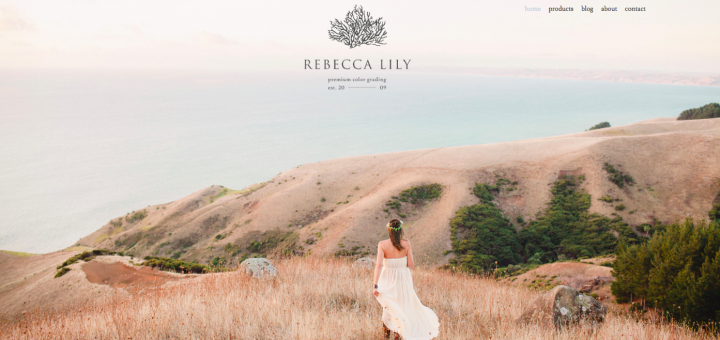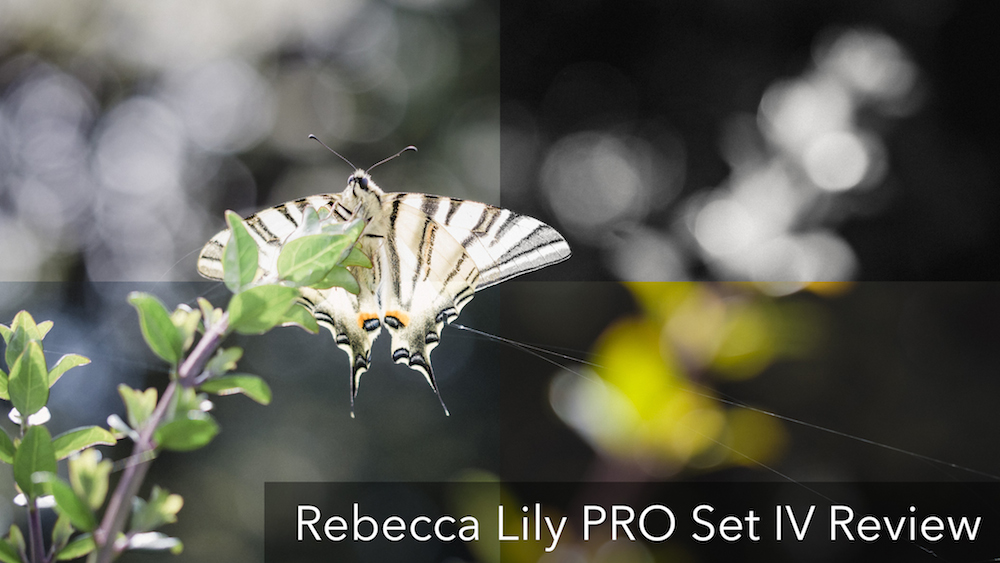When we share photographs for our reviews and comparisons, our tendency is to edit the images as little as possible so that our readers know what they can expect from a particular camera model in terms of image quality, colour rendering, white balance and so on.
However, when it comes to our personal body of work, we often enjoy applying presets, as doing so not only saves us time in post-processing but also allows us to give a cohesive look to a set of related images.

Long-time readers of MirrorLessons probably know by now that we are particularly fond of the presets from the Rebecca Lily collection. The artist behind these presets is Rebecca Patience, a fine art photographer who, in her quest to streamline her workflow, has developed over 475 stunning presets for Lightroom and Adobe Camera Raw since 2009. Suitable for both professional and enthusiast purposes, her collections are diverse in style, including colour, pastel, film-inspired, vintage, and black and white presets. You can see examples of how we’ve used her presets in the past by checking out our reviews of the PRO Sets II (here) and III (here).

Recently, Rebecca released the fourth edition of the PRO Set, which she kindly sent to us to review. This particular set includes more presets than ever before: 36 in total (colour, black and white, pastels, vintage, indoors), each with three, four or five versions. It also comes with 40 tools to help you adjust toning, clarity, sharpening, vignetting, grain, and even rounded corners.

In this review, we’re going to be focusing on the new features offered by version IV. These are as follows:
- The pastel presets which are now adjustable in five steps instead of just three.
- The more extensive collection of black and white presets.
- The new indoor and vintage presets.
Note: these presets have all been thoroughly tested on all RAW and JPG files from the most popular brands including Canon, Nikon, Leica, Fuji, Sony, Hasselblad and Phase One.
Pastel presets

The pastel presets, of which there are nine in this set, have long been our favourite because they give a soft etherial look to your image that is difficult to achieve in-camera.
Unlike the previous versions that only allowed you to adjust the intensity of the pastel effect in three steps, the new PRO IV set expands this to five. The base version (V1) of the pastels is milder than those in PRO III and works well if you already have a bright scene, while V5 is ideal for backlit shots or when you need to increase the brightness. They aren’t as effective if your image is taken indoors or is brimming with heavy shadows.
Pastel – Late Summer (V3) – Olympus OM-D E-M1
Slide to the right to see the original | Slide to the left to see the preset
[twentytwenty]


[/twentytwenty]
Pastel – Mint (V1) – Olympus OM-D E-M1
Slide to the right to see the original | Slide to the left to see the preset
[twentytwenty]


[/twentytwenty]
Each pastel preset imbues your image with a specific tint. For example, the Mint preset I used for the butterfly above has given the image a cool and crisp blue-green appearance, while the bare tree below was edited with Pastel Lilic, which has given the image a delicate purplish hue.
Pastel – Lilac (V3) – Fujifilm X70
Slide to the right to see the original | Slide to the left to see the preset
[twentytwenty]


[/twentytwenty]
The pastel presets are also ideal for portraits as long as the skin is correctly exposed in-camera or slightly overexposed in the case of caucasian models. If you severely under or overexposure, the presets won’t always be able to compensate for the incorrect tonal range.
Pastel – Mint (V2) – Olympus OM-D E-M1
Slide to the right to see the original | Slide to the left to see the preset
[twentytwenty]


[/twentytwenty]
Pastel – Neptune (V1) – Sony A7s
Slide to the right to see the original | Slide to the left to see the preset
[twentytwenty]


[/twentytwenty]
Black and white presets

With the release of PRO IV, Rebecca has greatly expanded the range of black and white presets. Their appearance ranges from bright and delicate with super-fine detail, to gritty and bold, and can be applied to a variety of images.
B&W – Pencil (V3) – Panasonic Lumix LX100
Slide to the right to see the original | Slide to the left to see the preset
[twentytwenty]


[/twentytwenty]
I really like how a handful of the B&W presets are able to pull a significant amount of detail out from images that would generally require a lot of post-processing to look decent. A good example is the image below taken in the Turin metro. Left in colour, it looks flat and unremarkable, but applying one of the stronger presets – in this case, Charcoal – highlights the woman’s face in the corner and the strong lines of the track.
B&W – Charcoal (V4) – Fujifilm X10
Slide to the right to see the original | Slide to the left to see the preset
[twentytwenty]


[/twentytwenty]
Interestingly, Rebecca named one of the black and white presets after her husband, art photographer Johnny Patience. According to Rebecca, they worked on the “Johnny” preset together to bring it close to his signature look with black and white film. One of the punchier and grainier presets in the set, it works best when applied to images with lots of contrast or images whose dark greys and blacks require deepening.
B&W – Johnny (V1) – Olympus Pen E-P5
Slide to the right to see the original | Slide to the left to see the preset
[twentytwenty]


[/twentytwenty]
B&W – Johnny (V3) – Olympus OM-D E-M1
Slide to the right to see the original | Slide to the left to see the preset
[twentytwenty]


[/twentytwenty]
Vintage and indoor presets

In contrast to the pastel presets, the new vintage presets feature deeper colours and tones, most of which are warm and earthy. Though they have been designed to give an “old school feel” to your images, and even incorporate vintage lens characteristics, they are subtle enough to be used for professional purposes.
Vintage – Moss (V1) – Olympus OM-D E-M1
Slide to the right to see the original | Slide to the left to see the preset
[twentytwenty]


[/twentytwenty]
What I really appreciate about these vintage presets is their ability to reveal or intensify colours that might otherwise remain too subdued to be noticed in the original image. For example, in the case of the flower image below, it might never have occurred to me to intensify or brighten the colour of the sepal had I been post-processing this image on my own.
Vintage – Henna (V2) – Olympus OM-D E-M1
Slide to the right to see the original | Slide to the left to see the preset
[twentytwenty]


[/twentytwenty]
As for the Indoor presets, there are only two to choose between: Cold and Warm in three levels. I admit I wasn’t as drawn to these presets on a personal level because I rarely do indoor photography. However, they appear to do an excellent job of evening out harsh contrast and over-saturated colours, as you can see from the example below which was taken inside a poorly-lit pub.
Indoor – Warm (V2) – Sony A7r II
Slide to the right to see the original | Slide to the left to see the preset
[twentytwenty]


[/twentytwenty]
A final preset I’d like to mention is neither Vintage nor Indoor but rather one of the Color set. Aptly named Shadowland, it is Rebecca’s take on the unique look of Leica M9 and the colours of underexposed Kodak slide film. It makes even the brightest images appear darker, richer and more moody, like many of those found in Rebecca’s 365 day photography project from 2016.
Color – Shadowland (V3) – Olympus Pen E-P5
Slide to the right to see the original | Slide to the left to see the preset
[twentytwenty]


[/twentytwenty]
Color – Shadowland (V3) – Olympus OM-D E-M1
Slide to the right to see the original | Slide to the left to see the preset
[twentytwenty]


[/twentytwenty]
Conclusion
It has been seven years since Rebecca first began producing her Rebecca Lily PRO sets, and the PRO IV set is easily the most beautiful and refined set she has released to date. From the film-inspired pastels to the expanded black and white range, there is something to suit every kind of photograph.
Perhaps the real evidence of Rebecca’s expertise in the field of digital post-processing is that you rarely have to dedicate time to tweaking the presets to achieve the desired result. This means you can spend less time editing in front of the computer and more time out shooting.
You can purchase the Rebecca Lily PRO Set IV, or any of her older sets, on her official website for $119. To stay up to date with her work, you can also follow her on Twitter.
Sample Images









